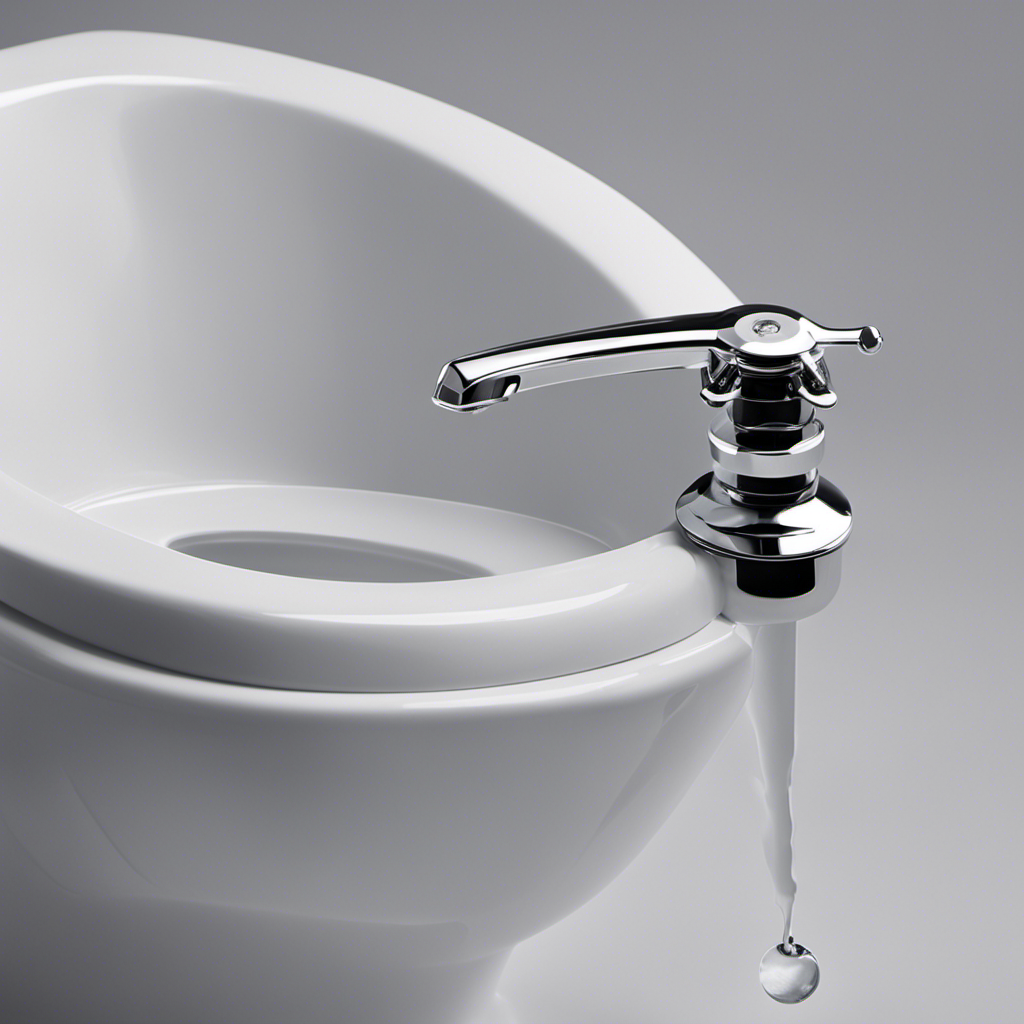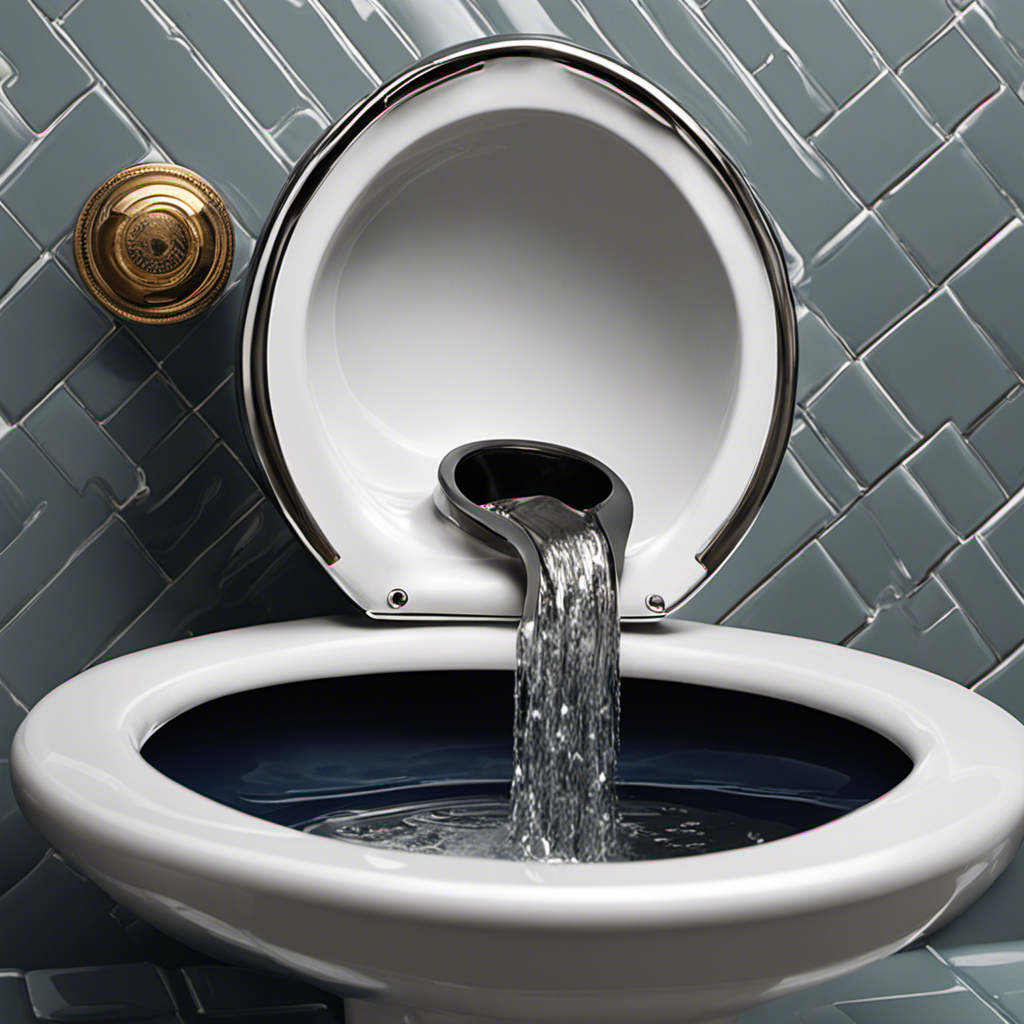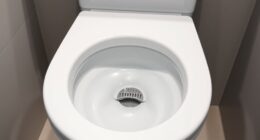As a seasoned DIY enthusiast, I’ve learned that keeping your toilet in tip-top shape is essential for a hassle-free bathroom experience.
Today, I’m excited to guide you through the step-by-step process of installing a toilet fill valve. This vital component ensures a steady flow of water, preventing those dreaded flush issues.
So grab your tools, shut off that water supply, and let’s dive into this informative journey of replacing that old fill valve with a brand new one.
Key Takeaways
- Choose a compatible fill valve for your toilet model, ensuring it has adjustable height and water-saving capabilities.
- Shut off the water supply by locating and turning off the shut-off valve near the toilet connected to the water supply pipe.
- Remove the old fill valve by disconnecting the connection between the water supply pipe and the valve, and pulling it out from the toilet tank.
- Install the new fill valve by positioning it in the designated hole at the bottom of the toilet tank, securing it tightly but not overtightening, and following the manufacturer’s instructions for proper installation.
Tools and Materials Needed
You’ll need a few tools and materials to install the toilet fill valve.
Choosing the right fill valve is crucial for a successful installation. Make sure to select a fill valve that is compatible with your toilet model and has the necessary features, such as adjustable height and water-saving capabilities.
Common mistakes to avoid when installing a fill valve include not shutting off the water supply before starting, failing to drain the tank completely, and using incorrect tools or techniques.
To install the fill valve, you will need a pair of adjustable pliers, a wrench, a bucket, a sponge, and Teflon tape.
It is important to follow the manufacturer’s instructions and ensure all connections are tight to prevent leaks.
Shutting Off the Water Supply
First, make sure that you’ve properly shut off the water supply before proceeding with the installation. This step is crucial to prevent any water leaks or flooding during the installation process.
To turn off the water, follow these steps:
-
Locate the shut off valve: The shut off valve is usually located near the toilet. It can be either a round wheel valve or a lever valve. Look for a valve that is connected to the water supply pipe leading to the toilet.
-
Turn off the valve: If it’s a round wheel valve, turn it clockwise until it stops. If it’s a lever valve, simply flip it to the off position.
-
Test the water supply: After shutting off the valve, flush the toilet to make sure that the water supply is indeed turned off. If the toilet doesn’t refill, then you have successfully shut off the water supply.
Removing the Old Fill Valve
To remove the old fill valve, follow these steps:
- Locate the connection between the water supply pipe and the valve.
- Use pliers to loosen and disconnect the connection.
- Make sure to turn off the water supply before starting the process.
- Once the connection is loosened, pull out the old fill valve from the toilet tank.
- If the valve is stuck or hard to remove, try using a lubricant or gently tapping it with a hammer to loosen any debris or corrosion.
- Remember to wear gloves and protective eyewear during the process.
Troubleshooting tip: If you encounter any resistance or difficulty in removing the old fill valve, consult the manufacturer’s instructions or seek professional help.
Now that the old fill valve has been successfully removed, we can move on to installing the new fill valve.
Installing the New Fill Valve
Once the old fill valve has been removed, it’s important to carefully position and secure the new valve in the toilet tank. Follow these steps to ensure a proper installation:
-
Choose the right fill valve: There are different types of fill valves available, such as the ballcock valve, the float cup valve, and the pressure-assisted valve. Each type has its advantages and is suitable for different toilet models.
-
Position the new valve: Place the fill valve in the designated hole at the bottom of the toilet tank. Ensure that it is aligned properly and sits securely.
-
Secure the valve: Use the provided nuts or screws to fasten the fill valve to the tank. Make sure it is tightly secured, but be careful not to overtighten and risk damaging the valve or tank.
Testing and Adjusting the Fill Valve
Now, you’ll want to check if the water level in the tank is at the proper height by adjusting the float or water level control. This step is crucial to ensure the optimal performance of your toilet fill valve. To help you troubleshoot common issues and make the process easier, I have created a table with some common problems and their respective solutions.
| Common Issues | Troubleshooting Solutions |
|---|---|
| Water level too low | Adjust the float or water level control to raise the water level in the tank. |
| Water level too high | Adjust the float or water level control to lower the water level in the tank. |
| Continuous running | Check for any leaks and tighten any loose connections. If the issue persists, consider replacing the fill valve. |
| Noisy fill valve | Ensure all connections are tight and no water is leaking. You may also try cleaning the valve or replacing it if necessary. |
Frequently Asked Questions
How Often Should I Replace My Toilet Fill Valve?
I replace my toilet fill valve every 5-7 years to ensure proper functioning. To extend its lifespan, regularly clean and inspect it for signs of wear or leaks. Signs of a faulty fill valve include inconsistent water levels and constant running.
Can I Use Any Type of Fill Valve for My Toilet?
Sure, any type of fill valve won’t work for your toilet. There are specific installation tips to follow when installing a toilet fill valve. Understanding the different types will help you choose the right one.
Is It Necessary to Shut off the Water Supply Before Replacing the Fill Valve?
Yes, it is necessary to shut off the water supply before replacing the fill valve. Not shutting off the water supply can lead to potential risks such as water damage and flooding. It is recommended to hire a professional for a safe replacement.
Are There Any Common Mistakes to Avoid While Installing a New Fill Valve?
When installing a new fill valve, it’s important to be aware of common mistakes that can occur. Some troubleshooting tips include checking for leaks, ensuring proper alignment, and tightening all connections securely.
How Do I Know if My Fill Valve Is Causing a Slow-Filling Toilet?
If my toilet is filling slowly, I can troubleshoot the issue by diagnosing the fill valve. I’ll check for clogs, adjust the water level, and replace the valve if necessary.
Conclusion
Well, that concludes the process of installing a toilet fill valve. By following these step-by-step instructions, you have successfully replaced the old fill valve with a new one.
Now, imagine the satisfaction of hearing the water flow smoothly into your toilet tank, knowing that your DIY skills have saved you from expensive repairs.
So, next time you encounter a faulty fill valve, don’t panic! Just grab your tools, shut off the water supply, and confidently tackle the task of installing a new fill valve.










